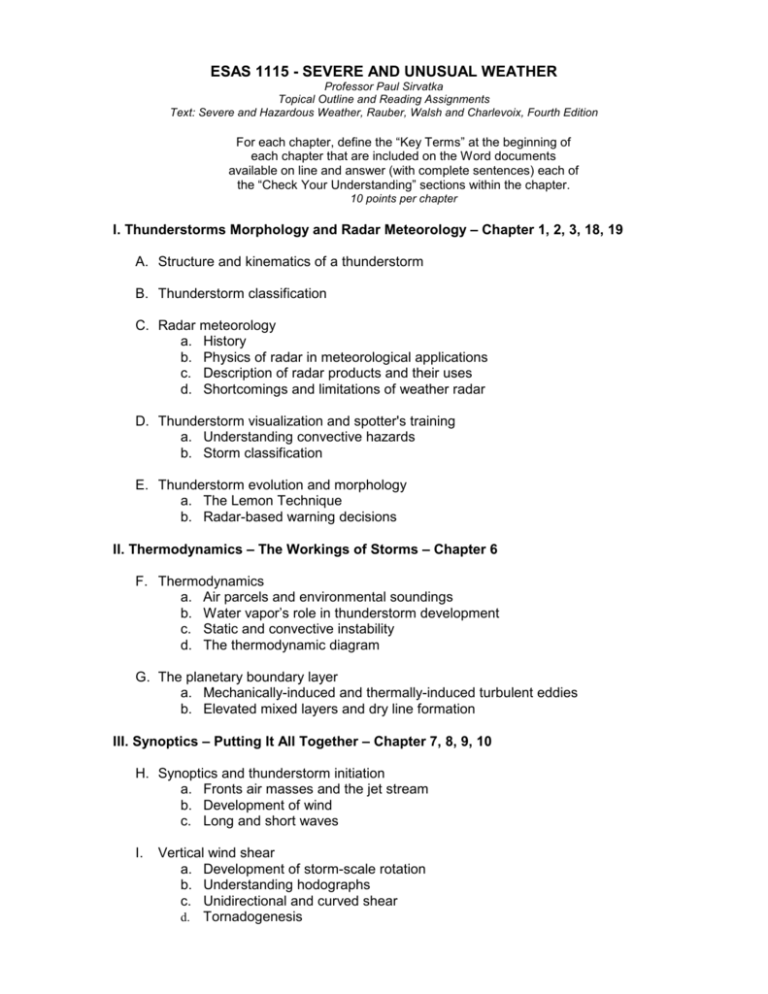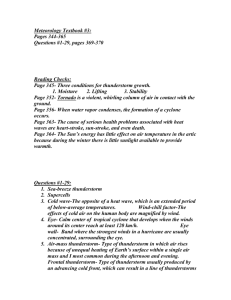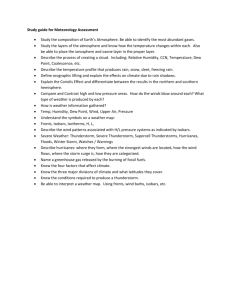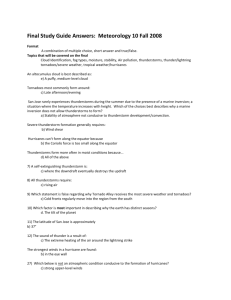ESAS 1115 - SEVERE AND UNUSUAL WEATHER
advertisement

ESAS 1115 - SEVERE AND UNUSUAL WEATHER Professor Paul Sirvatka Topical Outline and Reading Assignments Text: Severe and Hazardous Weather, Rauber, Walsh and Charlevoix, Fourth Edition For each chapter, define the “Key Terms” at the beginning of each chapter that are included on the Word documents available on line and answer (with complete sentences) each of the “Check Your Understanding” sections within the chapter. 10 points per chapter I. Thunderstorms Morphology and Radar Meteorology – Chapter 1, 2, 3, 18, 19 A. Structure and kinematics of a thunderstorm B. Thunderstorm classification C. Radar meteorology a. History b. Physics of radar in meteorological applications c. Description of radar products and their uses d. Shortcomings and limitations of weather radar D. Thunderstorm visualization and spotter's training a. Understanding convective hazards b. Storm classification E. Thunderstorm evolution and morphology a. The Lemon Technique b. Radar-based warning decisions II. Thermodynamics – The Workings of Storms – Chapter 6 F. Thermodynamics a. Air parcels and environmental soundings b. Water vapor’s role in thunderstorm development c. Static and convective instability d. The thermodynamic diagram G. The planetary boundary layer a. Mechanically-induced and thermally-induced turbulent eddies b. Elevated mixed layers and dry line formation III. Synoptics – Putting It All Together – Chapter 7, 8, 9, 10 H. Synoptics and thunderstorm initiation a. Fronts air masses and the jet stream b. Development of wind c. Long and short waves I. Vertical wind shear a. Development of storm-scale rotation b. Understanding hodographs c. Unidirectional and curved shear d. Tornadogenesis IV. El Niño, Hurricanes and Tropical Meteorology – Chapters 23, 24, 4 J. Tropical Meteorology a. El Niño, the Southern Oscillation, and La Niña b. The tropical atmosphere K. Tropical storms and hurricanes a. Tropical storm development b. Developing a general theory of hurricanes c. Hurricane structure d. Atmospheric circulations in terms of energetics L. Numerical models and weather prediction a. Introduction to numerical weather prediction b. The role of chaos in a dynamic environment c. The unpredictability of weather and The Butterfly Effect d. Strengths and shortcomings of numerical weather prediction









